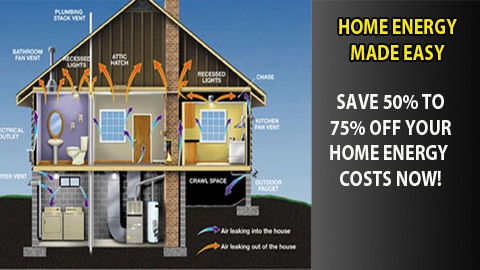
Look no further than a DIY solar power generator. With just a few materials and some basic knowledge, you can build a reliable and efficient system that harnesses the power of the sun.
As an expert in the field, I have seen firsthand how much of a difference a solar power generator can make. Not only does it provide peace of mind during outages or emergencies, but it also reduces dependency on fossil fuels and helps to mitigate climate change.
In this article, we will dive into the basics of building your own DIY solar power generator and explore different options for customization based on your specific needs. Let’s get started!
Benefits Of A Diy Solar Power Generator
Did you know that the average American household spends around $1,500 on electricity each year? That’s a huge expense that can quickly add up over time.
But what if I told you there was an alternative way to power your home without having to rely on expensive utilities? Enter: the DIY solar power generator.
As a solar power expert, I highly recommend building your own solar power generator for a number of reasons. Firstly, it’s incredibly cost-effective. With just a few materials and tools, you can create a fully functional system that powers your entire house using nothing but energy from the sun.
Plus, once it’s set up, you’ll never have to worry about paying another electricity bill again! Not only is this great for your bank account, but it also helps reduce our carbon footprint by relying less on traditional forms of energy.
So why not give it a try and see how much money (and energy) you could save?
Materials And Tools Needed For Construction

When it comes to constructing a DIY solar power generator, one of the most important components are the batteries, panels, and inverter.
You’ll also need the wiring, a charge controller, and the mounting hardware.
Of course, you’ll need the right tools, like a drill, screwdriver, wire cutters, pliers, soldering iron, crimp connectors, connectors, and fuses.
All of these items are essential to constructing a successful solar power generator.
Batteries
One of the most important materials needed for constructing a DIY solar power generator is a battery. Without a reliable and efficient battery, your generator won’t be able to store the energy generated by the sun during daylight hours, leaving you without power when you need it most.
As an expert in this field, I highly recommend investing in high-quality deep cycle batteries that are specifically designed for use with solar panels. These types of batteries provide consistent performance over long periods of time and can withstand repeated charging cycles without losing their effectiveness.
Don’t skimp on the cost or quality of your battery – it’s worth spending a little more upfront to ensure that your generator will work reliably for years to come.
Panels
Now that we’ve covered the importance of a high-quality battery, let’s move on to another critical component in building your DIY solar power generator – panels.
Solar panels are responsible for converting sunlight into usable electricity, so it’s essential to choose ones that are efficient and durable.
Look for panels made from high-grade materials with a proven track record of reliability, as well as those specifically designed for use with deep cycle batteries like the one we just discussed.
Don’t forget to factor in the size and wattage requirements of your specific project when selecting your panels, as this will impact overall performance and energy output.
With careful consideration and investment in quality materials, you’ll be able to create a powerful solar generator capable of providing sustainable energy for years to come.
Inverter
Now that we’ve covered the importance of selecting high-quality batteries and panels for your DIY solar power generator, let’s move on to another crucial component – the inverter.
As an expert in this field, I can tell you that a reliable inverter is essential for converting DC electricity from your battery into AC power usable by most household appliances.
Look for inverters with high efficiency ratings and pure sine wave output to avoid damaging sensitive electronics.
It’s also important to choose an inverter with sufficient wattage capacity to meet your energy needs.
By carefully considering these factors when selecting materials and tools for construction, you’ll be one step closer to creating a powerful and sustainable source of energy.
Step-By-Step Guide For Building Your Generator

Now that you have an understanding of the components necessary for your solar power generator, it’s time to dive into building one. Here is a step-by-step guide to help:
- Determine the size and capacity needed for your system based on the amount of energy required to power your devices.
- Purchase all necessary components such as solar panels, battery bank, charge controller, and inverter from reputable suppliers.
- Build the frame or container for your components according to their dimensions.
Once you have acquired everything you need and constructed your frame, assembly can begin.
First, mount the solar panels onto the frame and connect them to the charge controller using appropriate wiring.
Next, connect the battery bank to the charge controller followed by connecting the inverter to both the battery bank and any devices you wish to power.
With these steps complete, your DIY solar power generator should be up and running!
As a solar power expert, I encourage experimentation with customization options for your solar power system such as adding more batteries or upgrading your panel wattage output capabilities.
These modifications can take some trial-and-error but ultimately will result in better performance for meeting specific needs.
So don’t hesitate to start exploring!
Customization Options For Your Solar Power System
When it comes to building your own solar power generator, there are a variety of customization options that you can consider.
One popular option is adding more batteries to increase the storage capacity of your system. This means that you will be able to store more energy and use it when needed, even during periods of low sun exposure. Additionally, you can choose from different types of batteries such as lead-acid or lithium-ion depending on your needs and budget.
Another way to customize your solar power generator is through the type and size of solar panels used in the system. You can opt for either monocrystalline or polycrystalline panels depending on their efficiency levels and cost. Furthermore, by adding additional panels or increasing panel wattage, you can boost the overall output of your system.
It’s important to note that larger systems require more space for installation and may also require additional hardware such as charge controllers or inverters to accommodate increased electrical loads. By taking into account these factors and working with an expert in designing your customized setup, you’ll be sure to end up with a reliable and efficient solar power generator tailored specifically for your needs.
Conclusion
So there you have it, folks! Building a DIY solar power generator may seem daunting at first, but the benefits are endless.
Not only will it provide clean and renewable energy for your home or outdoor activities, but it also gives you a sense of independence and self-sufficiency.
Now, I know what some of you may be thinking – ‘But I don’t have any experience with electronics or construction!’ Fear not, my friends. With the right materials and tools, as well as following our step-by-step guide, anyone can build their own solar power system.
Trust me, the satisfaction of creating something with your own two hands is worth all the effort put into it.
Don’t settle for relying solely on non-renewable sources of energy. Take control of your power supply by building a DIY solar power generator today.
And who knows? You might even inspire others to do the same and contribute towards a cleaner and more sustainable future.

